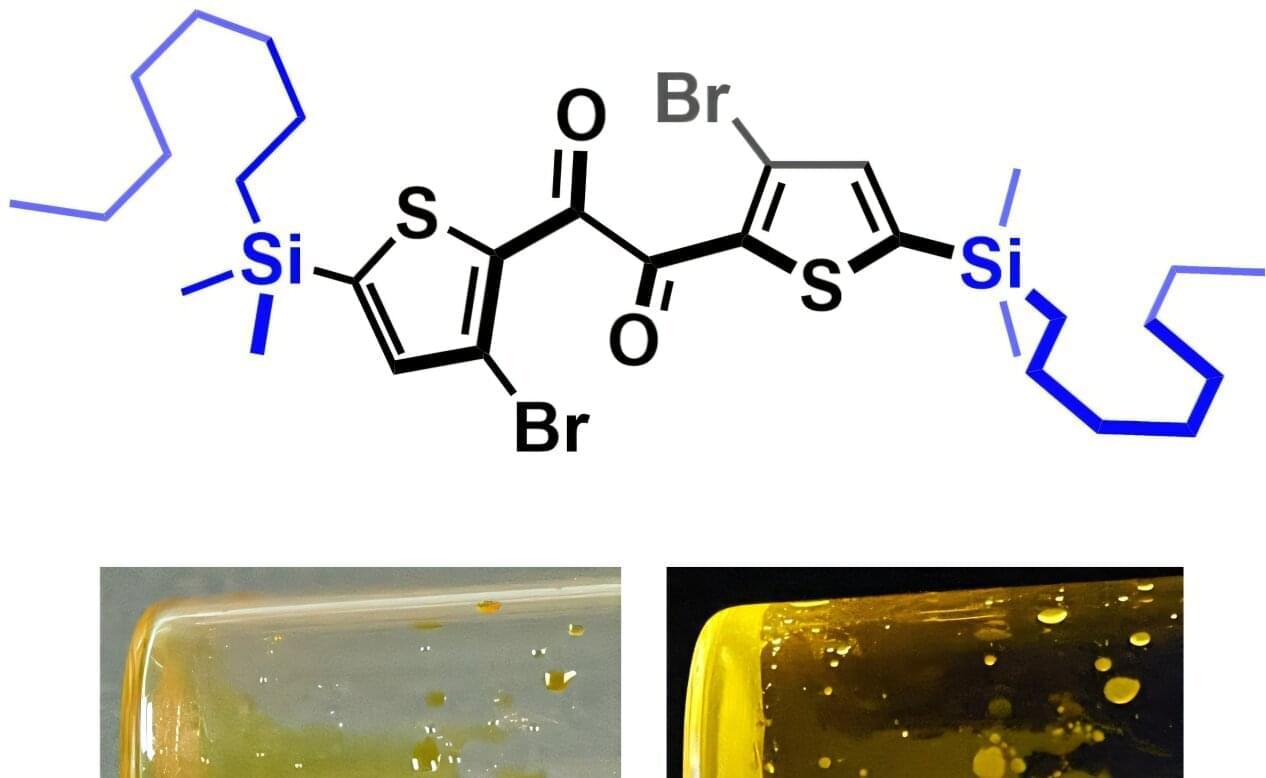The nostalgic “glow-in-the-dark” stars that twinkle on the ceilings of childhood bedrooms operate on a phenomenon called phosphorescence. Here, a material absorbs energy and later releases it in the form of light. However, recent demand for softer, phosphorescent materials has presented researchers with a unique challenge, as producing organic liquids with efficient phosphorescence at room temperature is considered difficult.
Now, researchers at the University of Osaka have attempted to tackle this problem by producing an organic liquid that phosphoresces in the ambient environment. This discovery is published in Chemical Science.
Traditional materials that can phosphoresce at room temperature contain heavy metal atoms. These phosphors are used to create the colored electronic displays we utilize every day, such as those in our smartphones. Organic materials, which contain carbon and hydrogen atoms (similar to materials found in nature), are more environmentally friendly.
